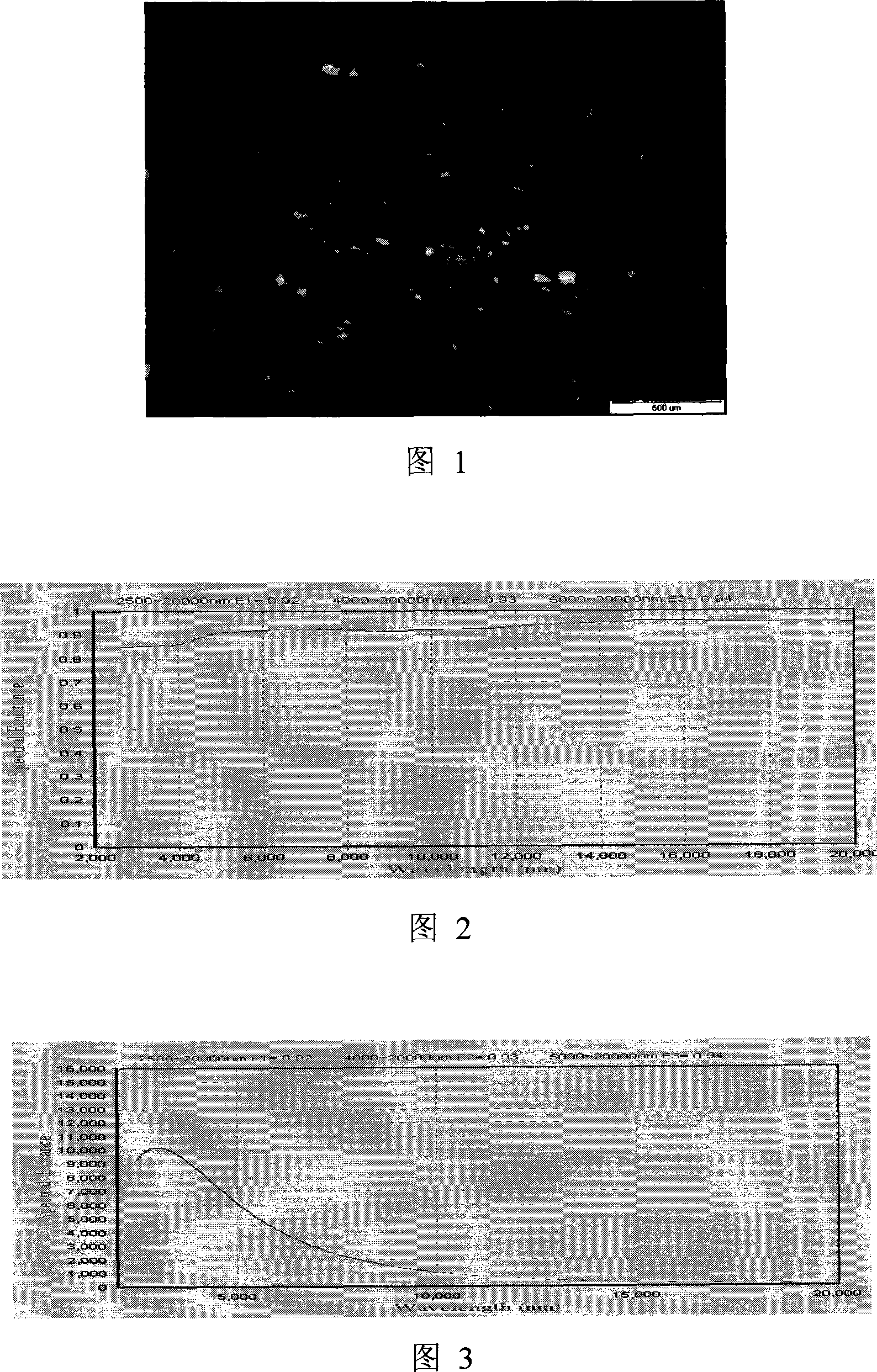Infrared radiation porous ceramics on furnace lining firebrick and preparation method thereof
A technology of porous ceramics and infrared radiation, applied in ceramic products, applications, household appliances, etc., can solve problems such as unsuitable for large-scale heating, low thermal conductivity, complex manufacturing process, etc., and achieve good resistance to rapid cooling and rapid heating, and chemical stability Good, the effect of reducing heat loss
- Summary
- Abstract
- Description
- Claims
- Application Information
AI Technical Summary
Problems solved by technology
Method used
Image
Examples
Embodiment 1
[0054] An infrared radiation porous ceramic on a furnace lining refractory brick, prepared from aggregate and a binder to form a slurry, the aggregate essentially contains the following ingredients in weight percentage: 20-45% of light floating beads, 20-40% of Suzhou soil , 5-15% of aluminum oxide microbeads, 5-12% of magnesium oxide, 5-15% of high emissivity materials, and 1-5% of coal powder.
[0055] Among them, the high emissivity material is composed of the following materials in weight percentage: ferric oxide 42-48%, manganese dioxide 20-30%, dicobalt oxide 8-14%, copper oxide 8-13%, cerium oxide After 7-12% mixing, it is made by sintering at 1260-1300°C for 0.8-2h.
[0056] The particles of the aluminum oxide microbeads are 100-180 mesh.
[0057] The binder contains the following ingredients in weight percent: 80-90% of silicon-chromium-aluminum composite sol, 10-20% of silicone resin;
[0058] The weight percentage between the binder and the aggregate is 33-42%:58-...
Embodiment 2
[0082] The weight percentages of the components of the aggregate in this embodiment are: 27-43% of lightweight floating beads, 25-38% of Suzhou soil, 7-13% of aluminum oxide microbeads, 7-10% of magnesium oxide, high emissivity Ratio material 7-13%, coal powder 2-4%;
[0083] Wherein, the high-emissivity material is composed of the following materials in weight percentage: 42% of ferric oxide, 20% of manganese dioxide, 14% of dicobalt oxide, 13% of copper oxide, and 11% of cerium oxide. Made by sintering at -1275°C for 0.8h.
[0084] The weight ratio of each component of the binder is: 80-85% of silicon-chromium-aluminum composite sol, 15-20% of silicone resin;
[0085] The weight ratio of binder to aggregate is 33-36%: 64-67%.
[0086] Experiments have shown that the bulk density of the porous ceramics described in this example is 0.90-0.99g / cm 3 , can be sintered at a temperature of 950-1150°C, the thermal conductivity at 100°C and 900°C are 0.042-0.046, 0.316-0.321w / m·k,...
Embodiment 3
[0088] The difference from the second embodiment is that the aggregate in this embodiment also contains a sintering aid less than or equal to 1% of the total weight of the aggregate, and the sintering aid is glass frit. Others are the same as the second embodiment. The sintering aid can improve the fluidity and sintering performance of the slurry, reduce the sintering temperature, and give the green body a certain strength at low temperature.
[0089] Experiments have proved that the porous ceramics described in this example can be sintered at a temperature of 950-1100°C.
PUM
| Property | Measurement | Unit |
|---|---|---|
| density | aaaaa | aaaaa |
| density | aaaaa | aaaaa |
| density | aaaaa | aaaaa |
Abstract
Description
Claims
Application Information
 Login to View More
Login to View More - R&D
- Intellectual Property
- Life Sciences
- Materials
- Tech Scout
- Unparalleled Data Quality
- Higher Quality Content
- 60% Fewer Hallucinations
Browse by: Latest US Patents, China's latest patents, Technical Efficacy Thesaurus, Application Domain, Technology Topic, Popular Technical Reports.
© 2025 PatSnap. All rights reserved.Legal|Privacy policy|Modern Slavery Act Transparency Statement|Sitemap|About US| Contact US: help@patsnap.com


